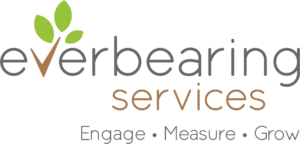In my July blog some basic SEO/Keyword strategies were covered and I shared that for August I would discuss more advanced SEO/Keyword strategies… Landing Pages and associated A/B Testing, in particular.
I shared that daily there are over one billion searches performed on Google, and that in order to be found in organic search by visitors you first need to plan and improve your web presence and SEO rankings. Also, according to Google over 20% of search phrases and keywords are new each and every month! The constant SEO task is to modify and evolve your search terms and strategies to reflect those changes.
So what does Google want? They want relevant, real content on the Internet that people want to read and tell other people about. If search engines don’t deliver the most relevant content then they aren’t doing their job.
There are two basic process types of SEO, Internal and External. Internal makes up about 15% of the total and means to design your site so it follows the best practices proven to rank high on Google. External SEO includes; written articles, press releases, blogs, comments, and site and social media content with embedded keyword “backlinks” to your site.
Landing Pages and A/B Testing go hand in hand… as A/B Testing, or Split Testing, is the way you fine tune a Landing Page, and therefore its results. Landing Pages, or Lead Capture Pages, are single web pages that appear as result of someone clicking on an advertisement or link. The Landing Page will usually display informational, marketing or sales copy and a call-to-action related to the link that directed you there.
Landing Pages are often linked to email campaigns, social media, or Search Engine Marketing (SEM) campaigns in order to enhance the effectiveness of the advertisements. The goal of a Landing Page is to convert site visitors into sales leads. By analyzing activity generated by the linked URL, one can use Click-Through-Rates (CTR) and Conversion Rates to determine the success of an advertisement. Tying your advertisement with the appropriate Landing Page will increase your quality scores on Pay-Per-Click and decreases your advertising costs per click.
A/B testing, or the old and proven ‘Scientific Method’ principle we used in our schooling days, can then be used on those Landing Pages to test something new to see if it makes their results (CTR, Conversion rates) better. The test can be switching out things like; keywords, content, the call-to-action, images, colors, or the offer, etc… you name it.
A/B testing, although not a direct SEO tool, does supports SEO efforts. A/B testing is about lead conversion and decreasing bounce rates. It does not increase your traffic it just improves how much of this traffic actually contacts you. This can and should be done on every page on a site. In one test you may improve conversion by 2% and another 13% and another you may get a 7% increase. So cumulatively in this example you would increase conversion by 22%. If the value of each conversion is $1.00 and you get 1000 hits a day these changes would increase revenue by $220.00 per day. Over time this is a lot of money.
Some marketers are balancing the quality and quantity of leads by incorporating optional fields on their Landing Pages, with a higher number of optional fields completed indicating higher quality. You have an opportunity to use Landing Pages and A/B Testing to make smart decisions about what makes the site or marketing programs better.
A/B testing offers the ability to continually learn from visitors and customers, and improve marketing efforts through this new knowledge. At the Optimization Summit 2012 a sponsored live A/B Test result showed that it helped drive a 6% increase in leads for one of its Landing Pages.
You need to understand your A/B Testing start point in order to form the basis of measuring the effects of change on any program. If tests are done without having performance standards to measure success, or if you still can’t determine if the test was successful, you test again.
When you engage a test, you should have some expectation of what will happen. By establishing test predictions prior to the test, you create goals for defining the success of the test; thereby lessening the need for continual testing.
You are going to have to carefully plan your changes and make sure they were dissimilar enough to make a difference on what might be an already well performing page.
Page improvement is typically made through these four methods:
- Showing the dollar value of the offer
- Adding urgency to the offer
- Making the image show the offer more accurately
- Reducing the amount of friction, or resistance to act, on the page
Landing Pages and A/B Testing, are active parts of the Internet SEO marketing process. They deliver a powerful one-two punch… together they are effective tools in driving SEO performance forward.
A community of avid followers make will make your ‘Content’ king. Invest in unique, relevant content that your audience wants. Make content so keyword effective that search engines can find it and index it, and so compelling that people talk about it and share it.
It’s all about the buzz you create… and how much value you provide your community of followers in return.
